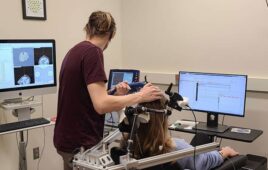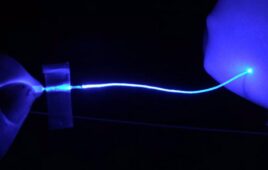 The largest study of computed tomographic (CT) scans taken in emergency departments across the country for children with head injuries describes the prevalence of “incidental findings” — results that were not expected from the injury — and categorizes them by urgency.
The largest study of computed tomographic (CT) scans taken in emergency departments across the country for children with head injuries describes the prevalence of “incidental findings” — results that were not expected from the injury — and categorizes them by urgency.
The article, titled “Incidental findings in children with blunt head trauma evaluated with cranial CT scans,” was published in the August issue of Pediatrics, and provides a context for doctors in emergency departments who encounter these situations.
“Incidental findings are a rare but significant event,” said Nathan Kuppermann, professor and chair of emergency medicine at the UC Davis Medical Center and principal investigator of the study. “It is important for doctors to look for abnormalities other than what they expect to find and to be prepared to interpret and communicate these findings to families.”
The study involved nearly 44,000 children seen for a head injury in 25 hospital emergency departments nationwide. Nearly 16,000 had CT scans to evaluate an injury, and about 4 percent of the scans revealed incidental findings ranging from enlarged tonsils to life-threatening cancers. Children with a known pre-existing brain abnormality were excluded from the analysis.
The researchers also stratified the incidental findings into three categories: those that needed immediate evaluation or treatment, those that needed appropriate timely outpatient follow up, and those that merited further investigation only if the problems were causing symptoms. Only 0.1 percent of the overall sample of CTs fell into the most serious category.
Due to the small percentage of patients with the most urgent incidental findings, the study authors do not recommend any changes to current CT scan guidelines. They believe emergency medicine physicians should continue to perform CT scans in children as is medically justified for their injury because a CT scan entails a small but known long-term risk of cancer from radiation exposure.
Genetic analysis, sophisticated imaging studies and other high-technology tests have made it possible to gain information that neither the doctor nor patient expects. Knowing what to do with these findings, especially if they are likely to be inconsequential to a patient’s health, can be a dilemma for physicians. The authors believe physicians should weigh the patient’s right to know against financial costs and potential negative health effects from anxiety, additional testing and possibly even unnecessary treatment brought on by learning of the findings.
“Because the practice of medicine has embraced technologies that provide information beyond the actual clinical question, a need to develop strategies to handle unexpected information now exists,” said Alexander Rogers, assistant professor of pediatric emergency medicine at the University of Michigan Health System and lead author of the study. “Particularly in the emergency room, doctors must decide quickly whether and how to disclose information to a family with whom they have no prior relationship and do not know what their response is likely to be.”
The study is by far the largest pediatric multicenter description of the prevalence of incidental findings on head CT scans. It also is a secondary analysis of a study that was designed to establish a decision rule for determining which children who present to the emergency room with a head injury should have a CT scan to evaluate it. The resulting Pediatric Head Injury/Trauma Algorithm has become standard in emergency departments worldwide and has helped reduce the number of unnecessary CT scans in children. Both studies were part of the Pediatric Emergency Care Applied Research Network (PECARN), the only federally-funded pediatric emergency medicine research network. With participating academic and urban hospitals across the country, the network has access to a large number of demographically diverse populations of children being seen in emergency departments.
“The large size of this study enhances the value and generalizability of our findings,” said Kuppermann, who is the founding chair of PECARN and served as its chair until 2008. “Without the large, multicenter network provided by PECARN, we would be unable to have undertaken such a definitive study.”
Other study authors are James Holmes of the UC Davis School of Medicine; Cormac Maher of the University of Michigan in Ann Arbor; Jeff Schunk and Michelle Miskin of the University of Utah School of Medicine in Salt Lake City; Kimberly Quayle of Washington University School of Medicine in St. Louis, Mo.; Elizabeth Jacobs of Brown University in Providence, R.I.; Richard Lichenstein of the University of Maryland School of Medicine in Baltimore; Elizabeth Powell of Northwestern University in Chicago, Ill.; and Peter Dayan of Columbia University Medical Center in New York, N.Y.
The study was supported by a grant from the Health Resources and Services Administration/Maternal and Child Health Bureau (HRSA/MCHB) Division of Research, Education, and Training and the Emergency Medical Services for Children Program. PECARN is supported by the HRSA/MCHB Emergency Medical Services for Children Program.
For more information visit www.ucdavis.edu.




